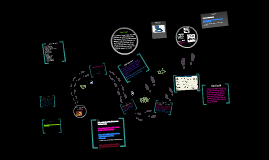PowerPoint for Business Presentations
Transcript: Introduction to PowerPoint PowerPoint has transformed business presentations with its user-friendly design and dynamic visual capabilities, making it a staple for effective communication. Understanding its features and importance can elevate presentation quality immensely. Overview of PowerPoint Best Practices Microsoft PowerPoint, launched in 1987, is a leading presentation software that allows users to create slideshows composed of text, images, videos, and animations. Its versatility and intuitive interface make it ideal for various applications, from educational settings to corporate presentations. Effective PowerPoint presentations require adherence to best practices focusing on slide limitations, design consistency, and rehearsal. These strategies enhance clarity and engagement, ensuring your message resonates with the audience. Key Features Importance in Business Slide Limitations Rehearsing Presentations PowerPoint includes essential features like slide layouts, transitions, and templates that streamline presentation creation. It also supports multimedia integration, collaborative capabilities, and presenter tools such as speaker notes and rehearsal timings, enhancing usability and effectiveness. PowerPoint is crucial for businesses, enabling clear communication of ideas and data. With visual aids, it enhances audience engagement and retention, supporting effective decision-making processes and team collaboration in meetings and presentations. Limiting slides to 10-15 ensures that each point is impactful. Research indicates that presentations with fewer than 10 slides are statistically more effective at maintaining audience attention, resulting in a more memorable experience. Practicing presentations reinforces confidence and timing. Studies show that rehearsing multiple times can increase audience engagement by 30%, as presenters become more familiar with the material and can deliver it more smoothly. Consistency in Design A cohesive design enhances professionalism in presentations. Using the same color palette, typography, and layout across slides maintains a visual flow, making it easier for the audience to follow along and understand the message. Interactive Elements PowerPoint for Business Presentations Interactive elements such as polls or quizzes encourage audience participation. Tools like Mentimeter or Kahoot can integrate real-time feedback, making the presentation dynamic and engaging. Maximizing Impact and Engagement Q&A Sessions Engaging Your Audience Q&A sessions allow presenters to address audience queries directly, fostering a collaborative atmosphere. Setting aside time for questions at strategic points keeps the audience invested and involved. Visual Hierarchy Engaging the audience is crucial for effective business presentations. Incorporating interactive elements, Q&A sessions, and multimedia enhances receptivity and retention of information. Visual hierarchy guides the viewer's eye through the slide, emphasizing key elements. It relies on size, color, and positioning to indicate importance, ensuring the audience grasps the main message quickly. A well-structured hierarchy enhances understanding and retention of information. Utilizing Multimedia Incorporating multimedia elements like videos and infographics can enhance understanding and retention. Visual aids cater to different learning styles, making complex data more accessible and engaging. Design Principles Design principles are essential for creating impactful and effective PowerPoint presentations. Understanding visual hierarchy, color theory, and font selection greatly influences audience engagement and retention. Font Selection Color Theory Color theory plays a vital role in design by influencing emotions and perceptions. The right color palette can set the tone of the presentation, promote brand identity, and enhance readability. Using contrasting colors for text and background improves clarity and impact. Choosing the right font is crucial for readability and brand expression. Legible fonts promote better communication, while creative fonts can convey tone and personality. Consistency in font usage throughout the presentation enhances professionalism and coherence. Tools and Resources PowerPoint offers a wealth of tools and resources that enhance presentations and improve efficiency. Utilizing add-ins, templates, and online learning opportunities can significantly elevate the quality of business presentations. Crafting Your Message PowerPoint Add-ins Online Learning Resources Effective messaging in presentations ensures clarity of objectives and engagement with the audience. Structured content and compelling storytelling are critical components that enhance understanding and retention. Add-ins enhance PowerPoint functionality by integrating additional features such as advanced graphics, data visualization tools, and CRM integration. Popular add-ins include Office Timeline for project management visuals and Grammarly for

















